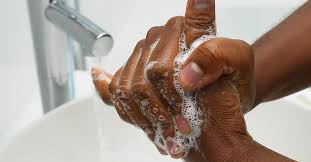The science behind washing hands – Methods, duration and frequency
By Lokmat English Desk | Published: October 15, 2020 09:00 AM2020-10-15T09:00:00+5:302020-10-15T15:19:54+5:30
Science behind transmission of infection through hands was not thought of in ancient times but most of the religion ...

The science behind washing hands – Methods, duration and frequency
Science behind transmission of infection through hands was not thought of in ancient times but most of the religion like Hindu, Muslims, Jewish and other cultures advocated hand hygiene as simplest form of personal hygiene. Thousands of people die every day around the world from infection transmitted through poor hand hygiene. Hands are the main pathway for disease transmission. So, hand hygiene is the most effective way of avoiding transmission of infection. Clean hands with alcohol-based solution or water and soap is preferred way of hand hygiene. It is faster, effective and better technique.
Hand washing with hand rub is common practice in healthcare set-up. Washing hands with soap and water is common and effective way of avoiding and preventing disease transmission, in the community. Germs are microscopic and can’t be seen by naked eyes. Germs like bacteria and viruses are found everywhere, including our routine use articles like cell phones, computers, desktops, doors, bench, almost everywhere. They can be transmitted to hands when we touch them & from hand they can enter into our mouth or eyes when we touch these areas. Germs don’t go away with routine wash with water because they tend to hide in the finger web and nail beds which are difficult to reach with routine hand wash so hands should be washed with seven step method. Method of handwashing: First Apply enough soap to cover all the surfaces of the hand.
1. Rub hands palm to palm
2. Right palm over left closure, with interlocked fingers and vice versa
3. Palm to palm with fingers interlocked
4. Back of fingers to opposing palms with fingers interlocked
5. Rotational rubbing of left thumb clasped with right palm and vice versa
6. Rotational rubbing of backside and front side with clasped fingers if left hand in right palm and vice versa
7. Rub both wrist in a rotating manner. Rinse and dry thoroughly.
Duration of entire procedure is 20-30 Seconds. Each hand movement should be done four to five times.
· Hand wash should be done every time before eating, and during and after preparing food
· Before eating food
· Before and after carrying for someone especially a sick person.
· After using toilet
· After cleaning nose, coughing, sneezing
· After touching garbage
· After handling pets, pet food or pet wastage
During the pandemic, no one knows which area is infected and which is not. It is best practice to wash hands every 3 to 4 Hourly during day time for at least 20-30 seconds. Portable sanitizers are very useful when you are outside, if sanitizer is not available handwashing with soap and water will be the ideal solution. The mantra of Covid-19 pandemic is Hand Washing: safe hand – safe health
The article is written by Dr. Anand Bhabhor, Additional Director & Consultant, Critical Care Medicine, Jaslok Hospital & Research Centre
Open in app